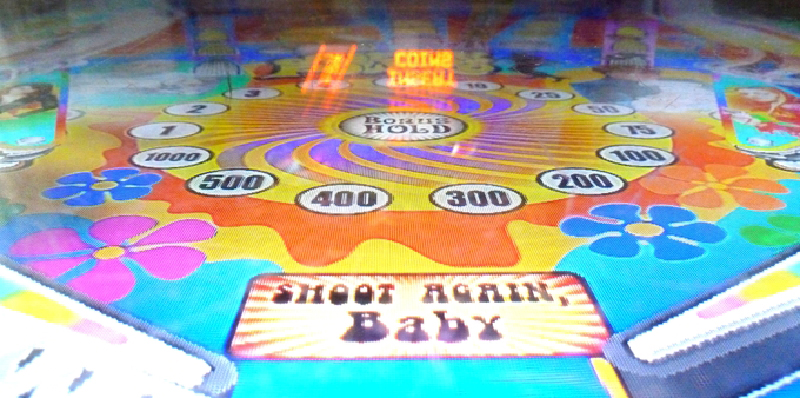Building a MAME machine – an arcade cabinet that will play everything from Galaga to Street Fighter II – is surely on the ‘to build’ list of thousands of Hackaday readers around the world. It’s a relatively simple build, provided you can put a sheet of MDF in your car; it’s just an emulator, and if you can find a CRT and have an old computer sitting around, you’re already halfway there.
There is another class of arcade games that can be emulated. This is, of course, pinball machines. [Jan] built a virtual pinball cabinet over the last few months and his build log is incredible. If you’ve ever wanted to build a pinball emulator, this is the guide to reference.
The most important part of a pinball emulator is the displays. For this, [Jan] is using a 40-inch TV for the playfield, a 28-inch monitor to display the backglass art, and a traditional 128×32 DMD. Instead of manufacturing his own cabinet, he repurposed an old electromechanical machine, Bally’s Little Joe.
The software is the real star of the show with PinballX serving as the front end, with Future Pinball and Visual Pinball serving as the emulators. These emulators drive the displays, changing out back glasses, and simulating the physics of the ball. The computer running all of this has a few neat electromechanical bits including a shaker motor, an original Williams replay knocker, and some relays or solenoids give the digital table a tremendous amount of force feedback. This is the way to do it, and if you don’t have these electromechanical bits and bobs securely fastened to the machine, you really lose immersion.
You can check out a video of the table in action below.
















a real pinball machine would have probably been a lot cheaper and more fun .. nice build though.
Yeah, but like this if you get bored with a table it’s just a matter of opening a different one instead of hauling out a new machine each time.
true, very nice table too.
I wonder if a hybrid machine would work. Have a LCD background for the play field like this one but have modular bumpers, ramps, paddles, …. that could be placed on the play field to match the game and then moved around for the next game setup. I was originally thinking super magnets but that would probably end up on “Fail of the Week”. :-)
Of course all of the bumpers would need to be inductively powered and connected to the main CPU via a wireless network connection for scoring and proper visual and audio feedback effects.
That can be done. There is a board called P-ROC which makes this possible. The guys from Dutch Pinball team made a new machine with this.
The cost of a real machine (A good one) is quite a lot and then factor in the cost of constantly maintaining it.
I’m curious as to where he got the various tables from? They all look like licensed versions of the real thing.
There exists an agreement between the Visual Pinball community and “Stern Pinball” – in my humble opinion the last remaining company building pinball machines – that only pinball tables may be recreated after 3 years had pass since Stern changed the mpu system. So newer pinball games can only be played on the real machines.
Maybe I missed something but other than designing your own tables, where can you download the ones like he has in his video?
Here you can download the emulation software and the tables, that I’ve shown in my video:
http://www.vpforums.org/
Thanks Jan! My wife is going to kill you for this. Just giving you a heads up. :-)
this is amazing. good job man
It’s beautiful, it’s impressive, but I’d rather have a single real machine. Lately Walking Dead has been my favorite…
I wonder how cool it would be with a 3D display! Of course you would need 3D glasses. Or maybe it’s possible to get a display like on the Nintendo 3DS of that size?
You can use BAM (better arcade mode) today with head trackers like WiiMotes Cam, Dual PS3 eye cam or Microsoft Kinect face tracking, so you don’t even need 3D glasses . Maybe you want to have a look at this video: https://www.youtube.com/watch?v=LTtMQIO_5aU
Unfortunately it’s only available for Future Pinball Emulation and not for Visual Pinball (which has better physics).
I want one of these. Á swedish computer forum also posted a detailed virtual pinball build log with lots of pictures a few years ago: http://www.sweclockers.com/galleri/6710-virtual-pinball-hemmabygge . I wish I was handy enough to complete a project like that. I guess people like me will have to wait for someone to create a pinball arcade simulator for some VR platform.
I built a smaller version of this, complete with solenoids for force feedback. And these solenoids are the first thing you turn off after a while because the clicking sound becomes really irritating. So “force feedback” sounds nice but it’s really the game that makes it fun. And playing on a real pinball machine is not really comparable with a virtual device. The feel is different.
I’m still looking for a way to export high-scores out of Visual Pinball to the internet so that you can compete with friends on a board or something. Now we have to shoot photos and email to compare high scores.
Hi Hans!
Regarding the highscore export maybe PINemHi will be your friend: http://www.pinemhi.com/
PINemHi Leaderboard: http://www.pinemhi.com/hiscores.php
Hey Jan,
That is cool! I will look into it.
Thanks!
Hi I have to say your set up/machine and video is clearly the best I have seen for looks, function and speed of the machine. Very nice!
Rob Twietmeyer
Thank you, Rob!